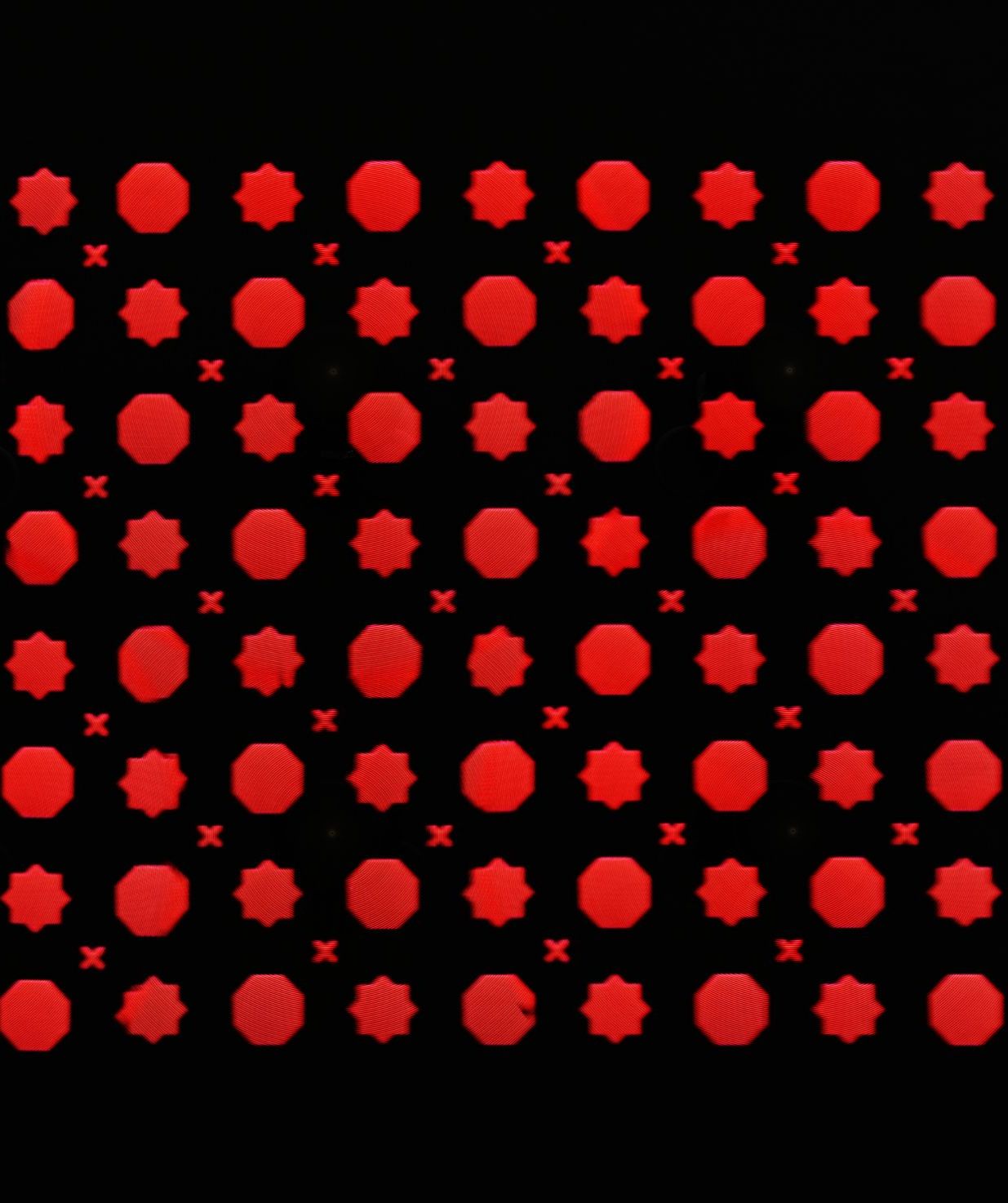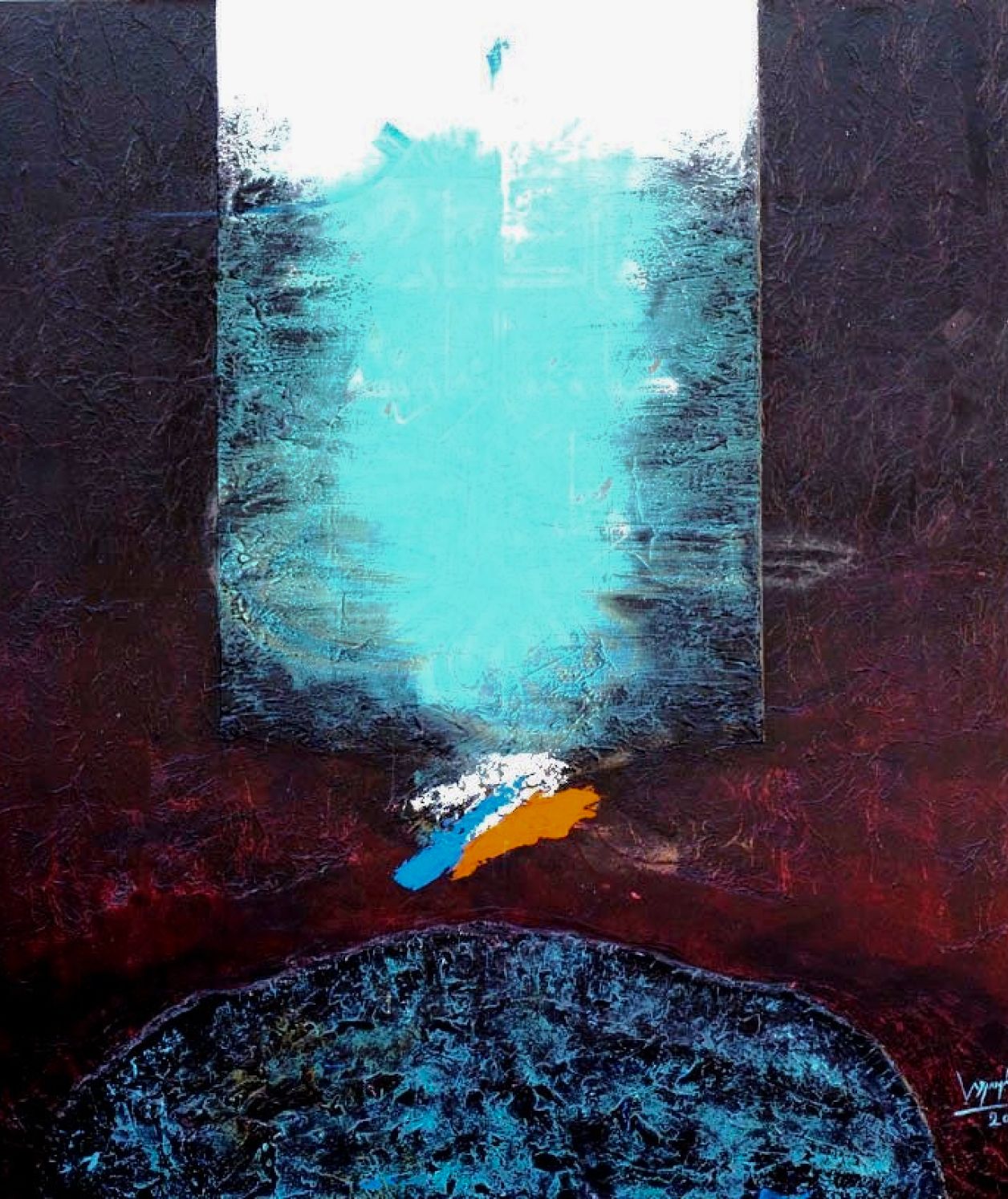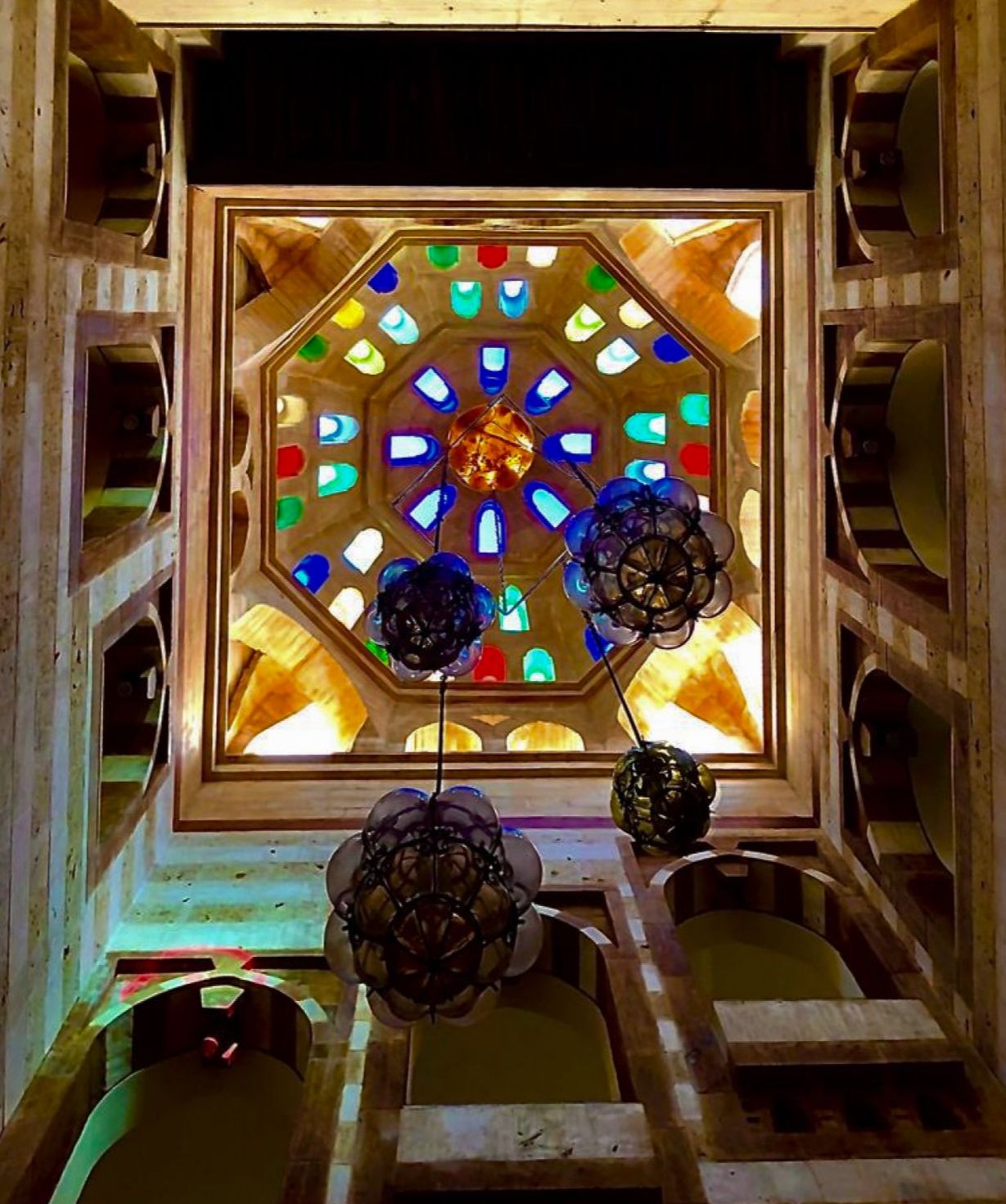The curation of light
Ali Alruzaiza Tribute to Ali Alruzaiza, 2021 Video projection Video design by Sara Caliumi and Carlo Camorali Courtesy the artist Photo © Riyadh Art
The first event of the Riyadh Art project, the first national public art initiative in Saudi Arabia. Riyadh Art intended to transform the city of Riyadh into a gallery without walls and a creative powerhouse for the digital age. The idea of organizing a light art festival was part of the plan; however, after the lockdown and the many health protocols of Covid-19, it seemed more realistic to launch the project with the light festival. The light resembles hope and healing. It washes the darkness, transcends borders, and literally defines our days and nights. Therefore, the theme chosen for the first edition of the Noor Riyadh festival was "Under One Sky."
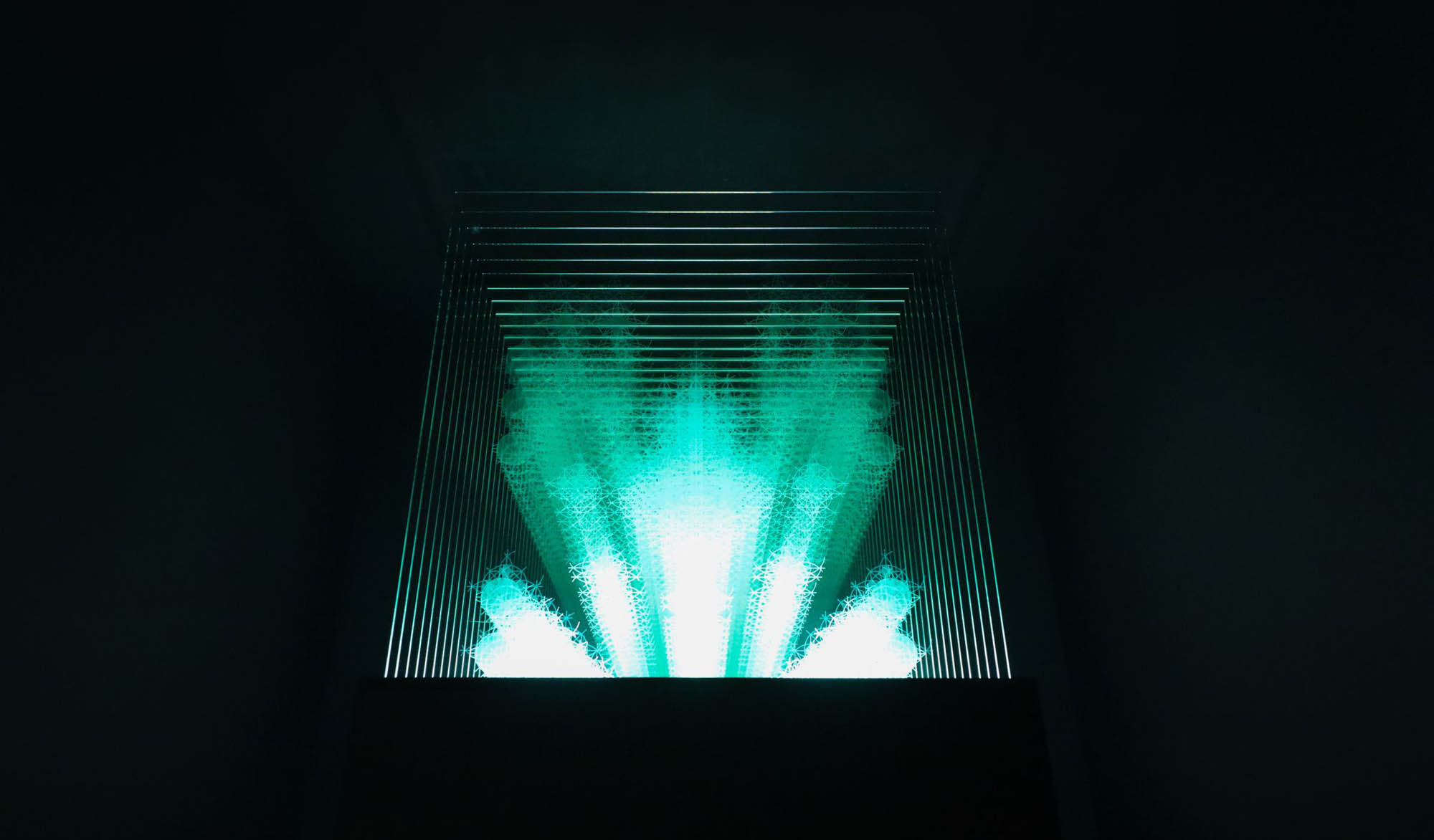
Proportion of Light by Ahmad Angawi. 2021. Wood and engraved glass 230 x 80 cm Courtesy the artist Photo © Riyadh Art 2021
The festival is planned to be an annual international event in Riyadh, consisting of three main components: citywide installations, an exhibition, and a rich educational program. Sponsored by the Royal Commission of Riyadh City (RCRC), the first edition started with 13 citywide locations and three curators working together. Pam Toonen and Vincenzo de Bellis were responsible for the international artwork, and I was responsible for the local art installation.
Each one of us had our unique challenges, but it came together beautifully thanks to the amazingly talented artists we had and the rest of the team. The first edition's success drove the officials of the Riyadh Art project to raise the budget for the second edition four times over. The plan is to allow more artists to participate and shed light on many more beautiful locations of Riyadh.
One of the most significant challenges I faced in this project was encouraging Saudi artists to experiment with light and produce something that still looks like them. Light was never sought as a medium by Saudi artists. Add to that the challenge of creating an entirely new installation during the lockdown. However, I went for artists Riyadh influenced personally to use this affinity as a driving force for their inspiration when they plan their site specific installation. The entire process brought us so many emotions, even during the final stages. One of my most fond memories was driving with the artists very late at night to do the testing. For us, as lifelong residents of Riyadh, it was exciting to visit a place like King Fahad's National Library, or Al-Masmak Fort, at a time where it usually shut. We felt like we owned Riyadh. The night we tested the final cut for Al-Ruzaiza's tribute, I invited his entire family, including his grandchildren, to celebrate this moment with us. It was very late on a school day, yet they all came and made it a magical moment.
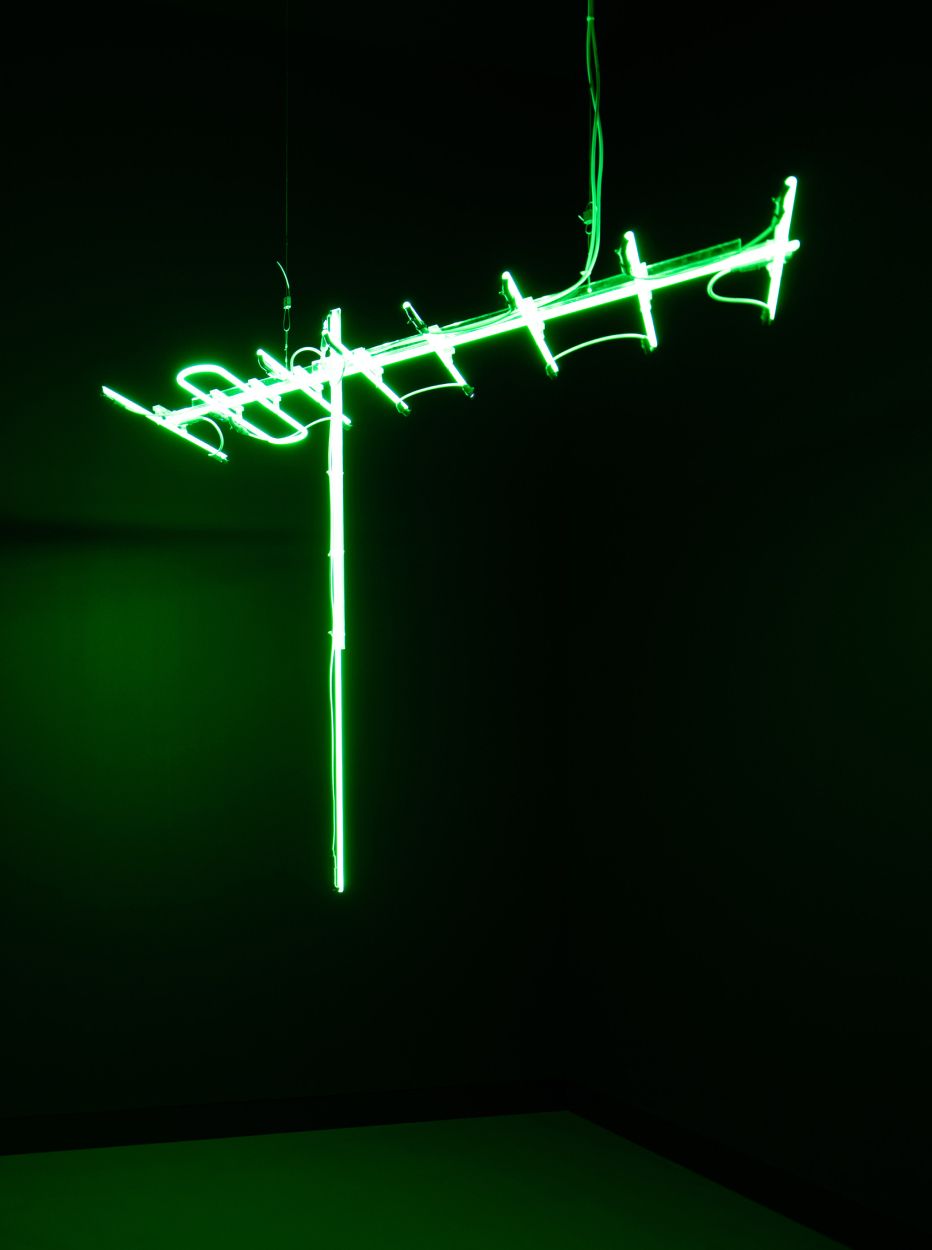
Antenna (Green), by Ahmed Mater. 2010. From the series Antenna. 150 x 150 x 50 cm. Courtesy of a private collection. Photo © Riyadh Art 2021.

Mohammed Al-Saleem’s digital art from 1995 discovered in a floppy disc by daughter Najla. Courtesy of Eiman El-Gibreen
Another historical moment we lived during the process was when we discovered the work we used for Al-Saleem's tribute. It was a computer graphic made with Windows’ Paint program. For me, this was a "painting with light"; seeing all the pixels in the tiny BMP file that fits perfectly with this festival and reminds the audience that this Riyadh-based pioneer was already exploring digital media's capacity to make new works of art. We ordered a floppy disc reader specifically to investigate what was inside this disc that was left in his bedroom in Italy when he died.
We were amazed by the highly detailed and colorful graphics, and, to our surprise, the file information showed that it was saved barely two hours after the birth of his second granddaughter. A storm of emotions hit us all as we were unveiling this together, and we started to scream and laugh and tear up. I was lucky I captured that moment on film. Later, a family member remembered that Al-Saleem designed
this graphic for his other daughter's wedding. He was waiting for Najla to give birth to assign a date for her sister's wedding after she recovers. This information was the last piece of the puzzle.. The Noor Festival allowed us to share with the world a piece of rare information on Al-Saleem. It was the first time that the public learned that he dabbled with technology. At this unique festival of light and art, many stories came to life, becoming timeless and elusive like light itself.
